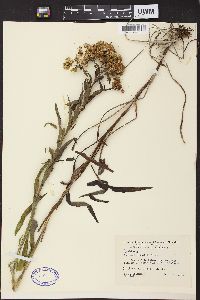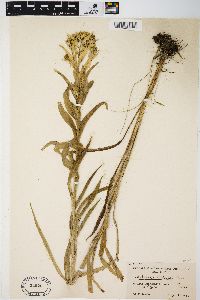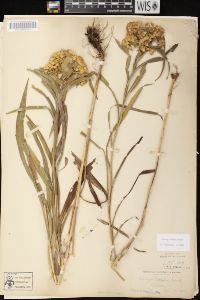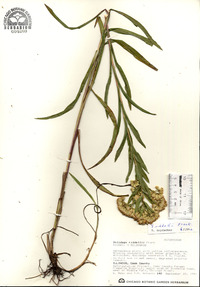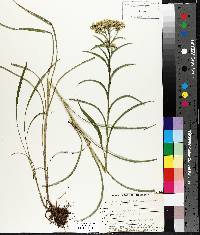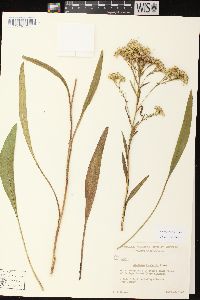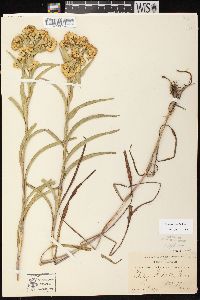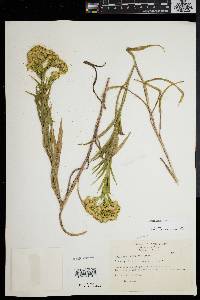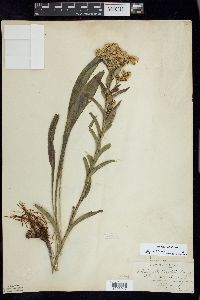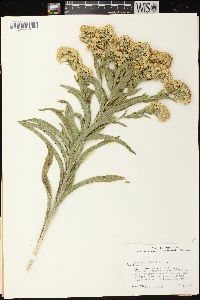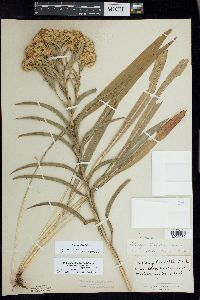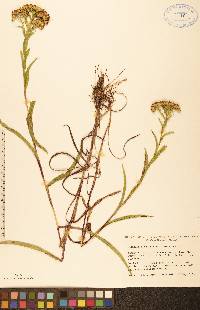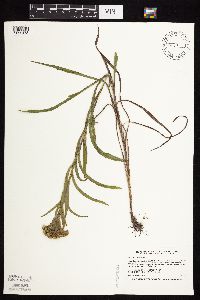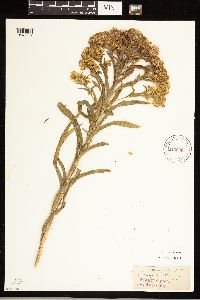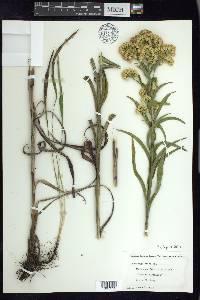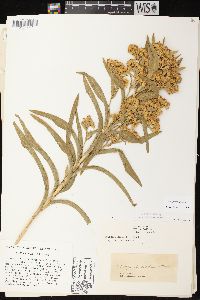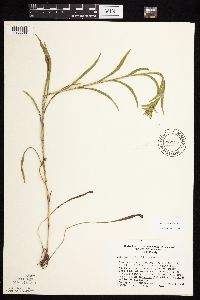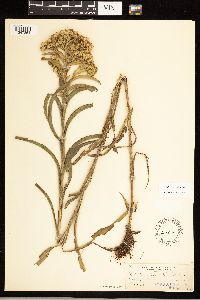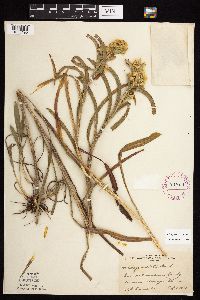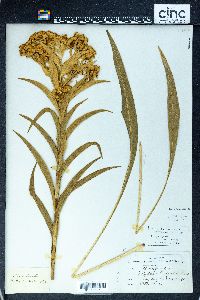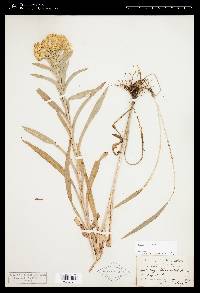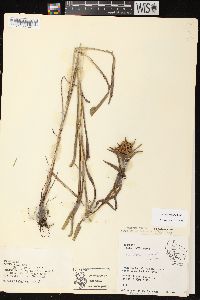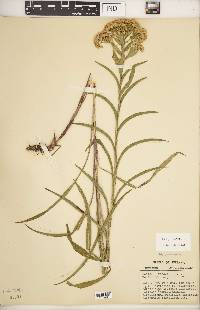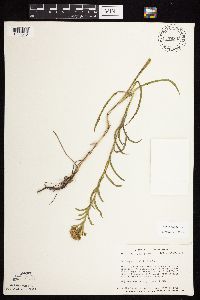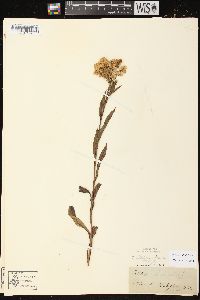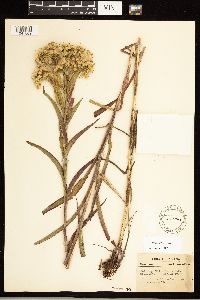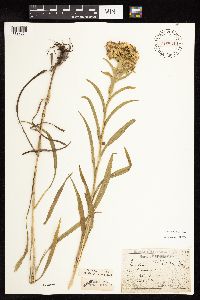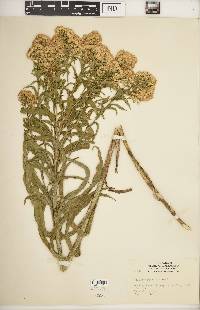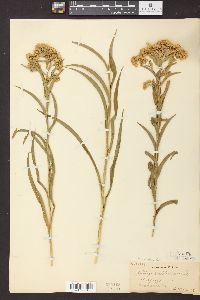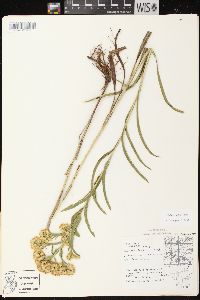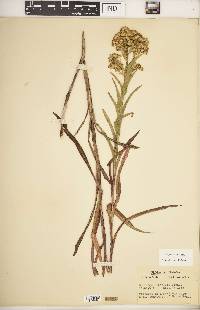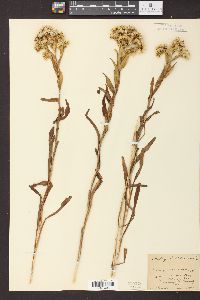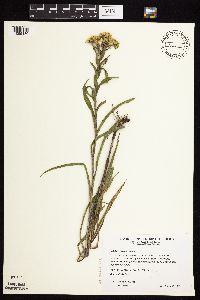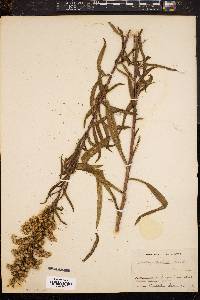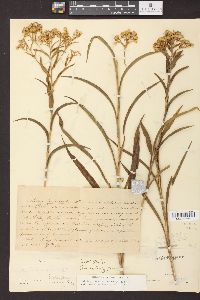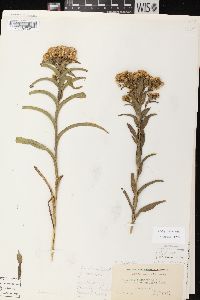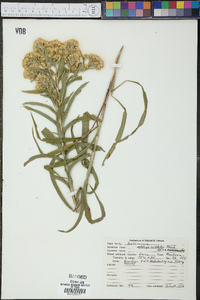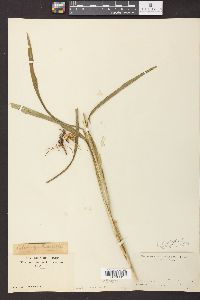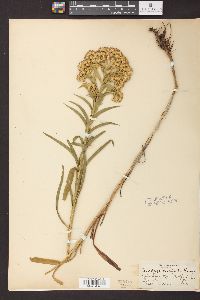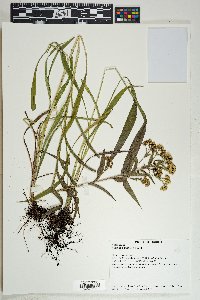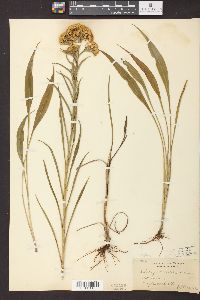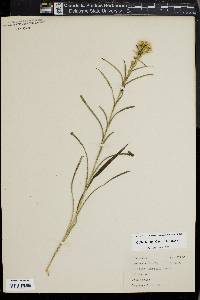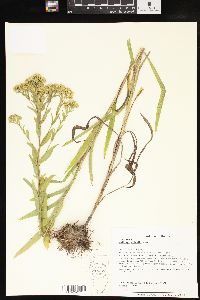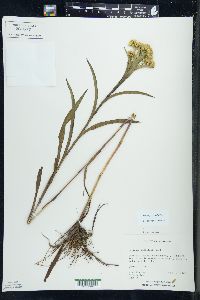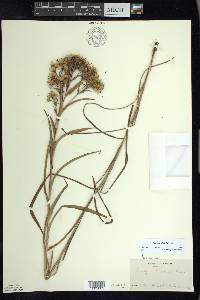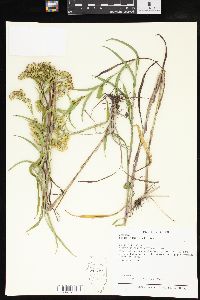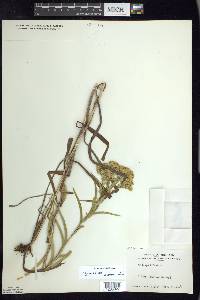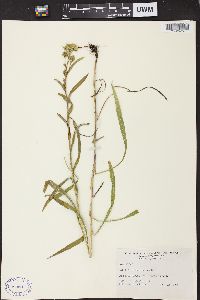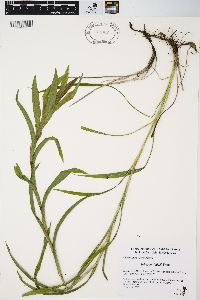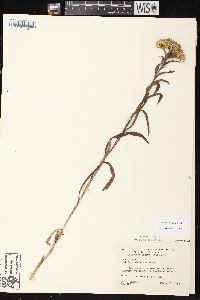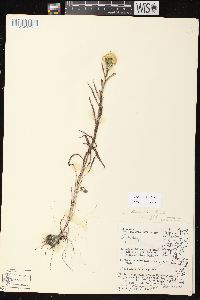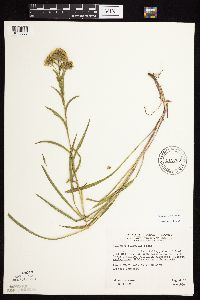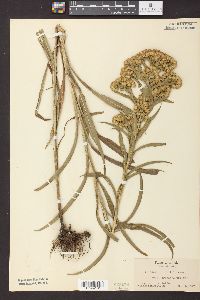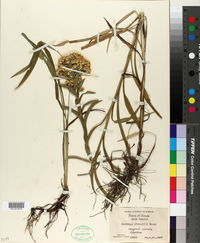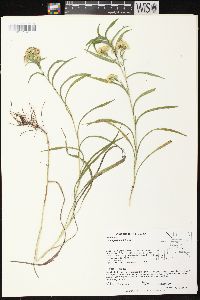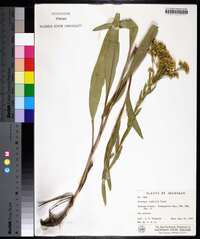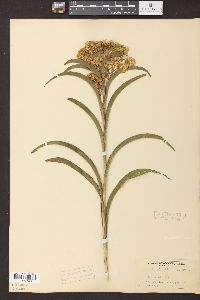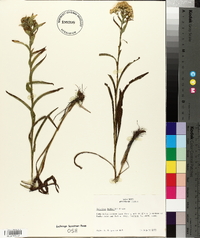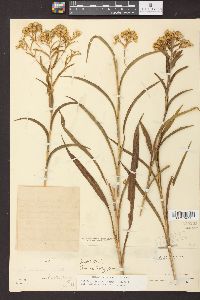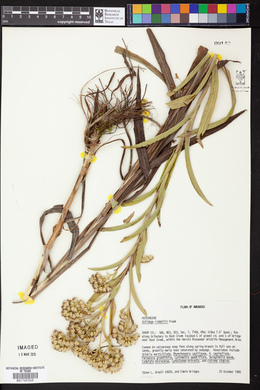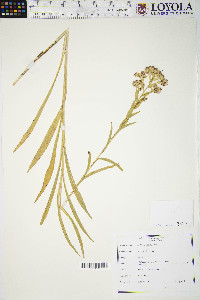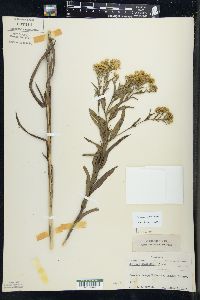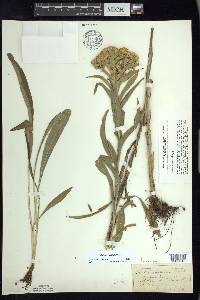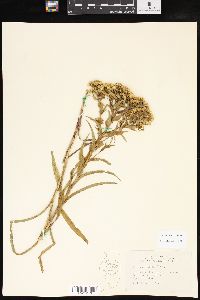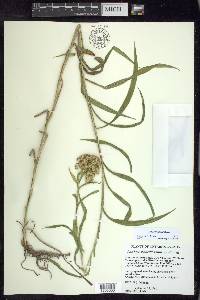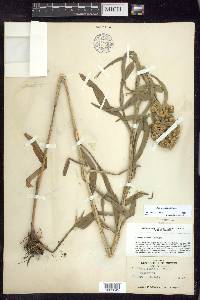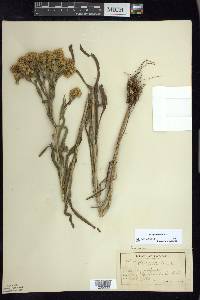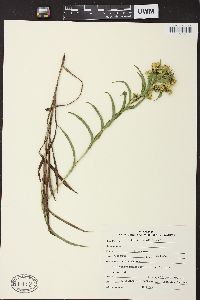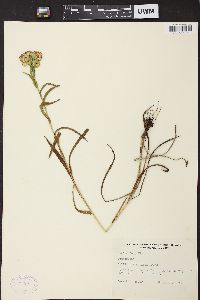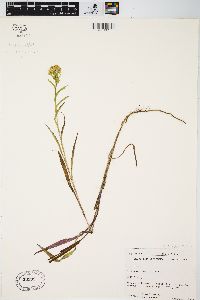
|
|
|
|
Family: Asteraceae
Riddell's Goldenrod
|
Plants 40-100 cm; caudices branching; vascular bundles and petiole bases marcescent (attached to old stems for more than a season). Stems 1-10+ , erect, glabrous. Leaves: basal and proximal cauline usually withering by flowering (other rosettes may be present), tapering to long, winged petioles, blades often recurved, linear- lanceolate or -oblanceolate, 100-240 × 8-16 mm, folded along midrib ( V -shaped in cross section), bases usually with (2-)3-8 prominent lateral nerves, apices acute to obtuse, faces glabrous; mid to distal cauline sessile, blades recurved, linear-lanceolate, 50-70 × 8-11 mm, reduced distally, folded, bases with prominent lateral nerves. Heads 30-450 in corymbiform to somewhat paniculiform with rounded corymbiform branches (robust plants) arrays, branches and peduncles strigillose. Peduncles 2.8-4 mm, moderately short-hispido-strigose, lanceolate bracteoles 0-1. Involucres narrowly campanulate, 4.5-6 mm. Phyllaries (14-18) in 3-4 series, unequal, obtuse, broad, striations weak, obtuse to rounded, glabrous. Ray florets 7-9; laminae 4.5-5.5 × 0.4-0.5 mm. Disc florets 6-10; corollas 4.5-5.2 mm, lobes 0.7-1.8 mm. Cypselae 1.5-2.2 mm, glabrous; pappi 3.5-4 mm (apically clavate). 2n = 18. Flowering Sep-Oct. Wet prairielike sites and marshy ground; 100-400 m; Man., Ont.; Ill., Ind., Mich., Minn., Mo., Ohio, Wis. Plants 4-10 dm from a ±well developed caudex, sometimes with creeping rhizomes as well; stem generally stout, glabrous except for some puberulence in the infl; lvs ±basally disposed, glabrous except for the scabrous margins, entire, firm, mostly conduplicate, tending to be triple-nerved, the lowest ones with elongate, narrow blade much exceeded by the petiole, but often deciduous; cauline lvs numerous, becoming sessile but otherwise not strongly reduced upwards, clasping or sheathing at base, often arcuate; infl corymbiform, the heads numerous and crowded, rarely less than 50, often several-hundred; invol 5-6 mm, glabrous, its bracts firm, obtuse or broadly rounded, ±striate; rays 7-9; achenes glabrous or nearly so, evidently 5-7-nerved; 2n=18. Swamps, wet meadows, and moist prairies; s. Ont. to O., w. to Minn. and Mo. Gleason, Henry A. & Cronquist, Arthur J. 1991. Manual of vascular plants of northeastern United States and adjacent Canada. lxxv + 910 pp. ©The New York Botanical Garden. All rights reserved. Used by permission. From Flora of Indiana (1940) by Charles C. Deam Infrequent in the lake area and local south of it where its habitat occurs. It is found in springy and marshy places that are somewhat alkaline. It is often found closely associated with Solidago ohioensis, which flowers about 10 days earlier, but in a wetter habitat. This zonal distribution is often quite conspicuous. It is to be noted that where this species grows in numbers the plants vary greatly in size, doubtless due to some habitat factor. …… Indiana Coefficient of Conservatism: C = 9 Wetland Indicator Status: OBL |
This project was made possible in part by the Institute of Museum and Library Services [MG-70-19-0057-19].
Powered by Symbiota


